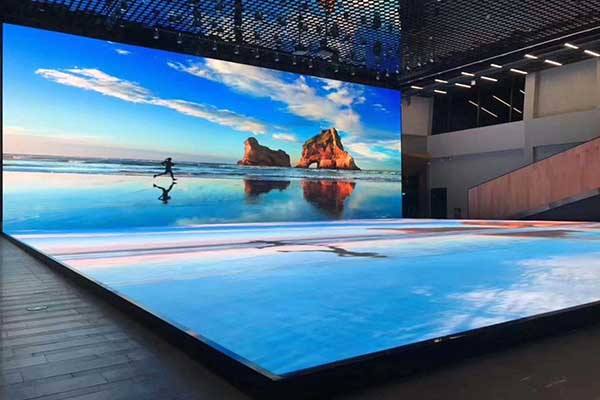Describes two ways that can control brightness of a large led display video wall for rental and fixed led screens . One is to change the current flowing through the LED, the general LED current control allows continuous operation
In about 20 mA, in addition to a saturation of the red LED, the other LED brightness is basically proportional to the currentflow; Another way is to use the human visual inertia with a pulse width modulation method to achieve gray scale control, cyclical changes is pulse width (ie duty cycle), as long as the repeated cycle of light short enough (ie, high enough refresh rate), the human eye is not feel light-emitting pixels in the jitter. More suitable for the PWM digital control, so in general the use of computer to provide the LED display today, almost all of the LED screens are based on pulse width modulation to control the gray level.
LED display control system usually consists of main control box, scan control and device board three parts. Main control box from the computer’s graphics card to get a colored screen pixel luminance data, then re-assigned to the number of pieces of scan plates, each responsible for controlling the scanning plate number on the LED display row (column), and each row (column) on the LED’s display and control signal is transmitted using serial. There are two Led display control signals for serial transmission of ways: one is the centralized control panel scan pixel grayscale, scanning from the control box panel to the line pixel brightness value decomposition (ie, pulse width modulation) Then the opening of the line LED signal pulses (light 1, light is 0) by using serial transmission line to the corresponding LED on the control whether the light. The use of the device small, but the large amount of serial transmission of data, because in a repeating cycle of light, each pixel in the 16-level gray scale requires 16 pulses, required under the 256-level grayscale 256 pulses, the device operating frequency restrictions, can only do 16 gray LED screen.
Another way is to scan the content of board serial transmission is not the signal for each LED in the switch but the brightness of an 8-bit binary value. Each LED has its own pulse width modulator to control the light time. Thus, in a repeating cycle of light, each pixel in the 16-level gray scale only 4 pulses, 256 gray scale only 8 pulses, greatly reducing the frequency of serial transmission. Decentralized control LED intensity with this method can be easily controlled with 256 levels of gray.